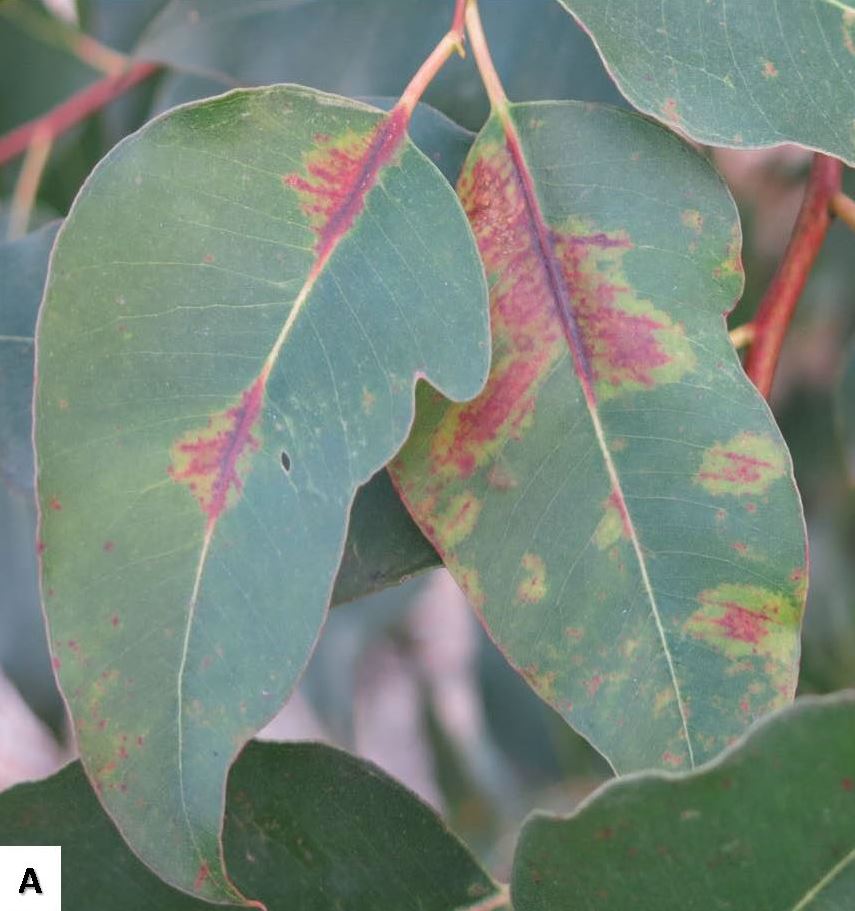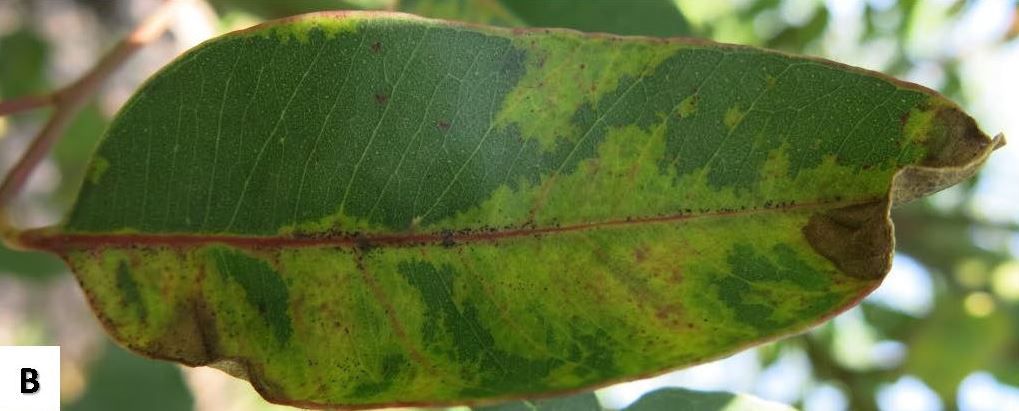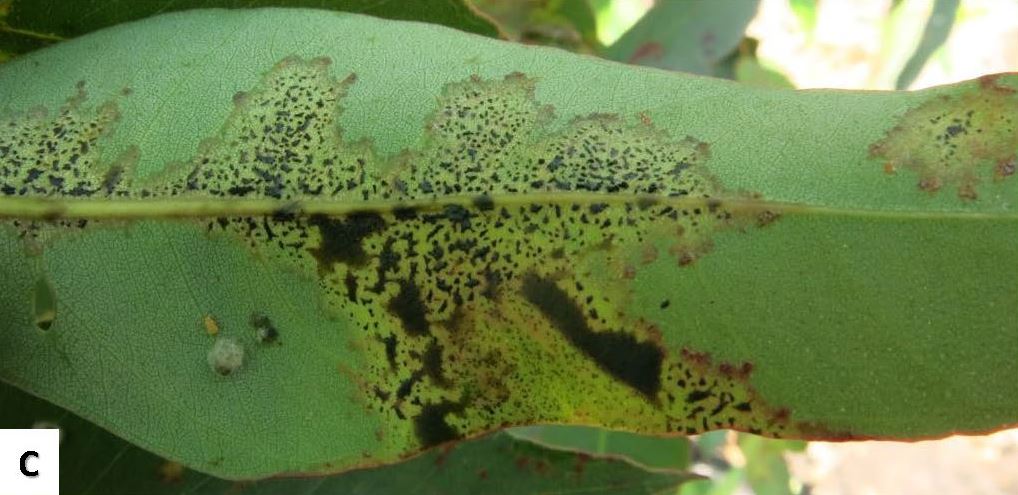New report of a serious fungal pathogen on Eucalyptus in SA 2015-08-25

The TPCP team has recently confirmed the presence of a very serious pathogen of Eucalyptus in South Africa. Destructans leaf blight is caused by Teratosphaeria (Kirramyces) destructans. Symptoms of the disease were first noted on E. grandis x E. urophylla hybrid clones in a clone screening trial in the Zululand area. The disease is now known to be present in an area stretching from Mtubatuba to Kwambonambi.
Symptoms of the disease include chlorotic (yellow) lesions with red coloration of the lesion margins and veins on the top surface of leaves. On the underside of leaves, fungal fruiting bodies can be seen oozing black spores. Infection is most common on young leaves and shoots but also occur on older leaves. Symptoms are most pronounced in the lower canopy of trees.
Destructans leaf blight was first described from Indonesia in 1996. It subsequently spread throughout South East Asia where it causes severe damage to E. grandis, E. camaldulensis and hybrids of these species.
To help us gather information on the spread and host range of T. destructans we appeal to foresters to look out for the symptoms described in the attachment and contact Izette Greyling (izette.greyling@fabi.up.ac.za, 083 269 1983) or Jolanda Roux (jolanda.roux@fabi.up.ac.za) if you spot the disease in your plantations.
Photos: (A & B): Chlorotic (yellow) lesions with red coloration at the lesion margins and veins on the upper surface of leaves. (C): Fungal fruiting bodies oozing black spores on the underside of leaves.




